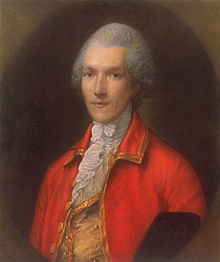“After what is past, a reconciliation is impossible.”
We have only a couple of samples of what Madame de Rumford called her husband. The Countess de Bassanville wrote that Rumford’s “conversation was largely made up of his own experiences,” rather than anyone else’s concerns. His wife would whisper to her guests that he “was a veritable sample card.”
But that wore thin. The count’s daughter Sally, of all people, reported her stepmother saying, “My Rumford would make me very happy could he but keep quiet.”
Around the second anniversary of the marriage, in October 1807, Rumford sent his daughter this story:
A large party had been invited I neither liked nor approved of, and invited for the sole purpose of vexing me. Our house being in the centre of the garden, walled around, with iron gates, I put on my hat, walked down to the porter’s lodge and gave him orders, on his peril, not to let anyone in. Besides, I took away the keys.By April 1808, Rumford was looking for someplace else to live. But he didn’t leave. It appears the couple disagreed over the financial terms of a separation, which probably meant the count wanted more money. He wrote, “I have the misfortune to be married to one of the most imperious, tyrannical, unfeeling women that ever existed, and whose perseverance in pursuing an object is equal to her profound cunning and wickedness in framing it.”
Madame went down, and when the company arrived she talked with them, she on one side, they on the other, of the high brick wall. After that she goes and pours boiling water on some of my beautiful flowers.
Madame de Rumford’s many friends, however, felt the count was behaving like “a domestic tyrant” while she remained “the most amiable woman in the world.”
As of late 1808, Count Rumford was taking most of his breakfasts and dinners in his room, his only companion Mary Sarah Aichner, the little servant girl he’d brought from Bavaria, who ate at a sideboard. But Madame was still entertaining regularly, as the count complained:
Three evenings in the week she has small tea-parties in her apartment, at which I am sometimes present, but where I find little to amuse me. This strange manner of living has not been adopted or continued by my choice, but much against my inclinations. I have waited with great, I may say unexampled, patience for a return of reason and a change of conduct. But I am firmly resolved not to be driven from my ground, not even by disgust.But still he continued to live in the Lavoisier mansion.
A separation is unavoidable, for it would be highly improper for me to continue with a person who has given me so many proofs of her implacable hatred and malice.
By 1809 the strain of fighting with his wife and not winning had made Rumford ill. The couple finally separated with a legal agreement on 30 June. The count declared those last six months to be “a purgatory sufficiently painful to do away the sins of a thousand.” He continued to complain about his ex:
- “that tyrannical, avaricious, unfeeling woman.”
- “Never were there two more distinct beings than this woman (for I cannot call her a lady) before and after marriage.”
- “She is the most avaricious woman I ever saw, and the most cunning—things which I could not possibly know before marriage.”
All this time, Rumford had continued to report on his scientific investigations into heat and light. He became convinced that white clothing retained heat better than dark, so in the winters he dressed head to toe in white. He equipped his carriages with wheels six times wider than usual, again on scientific principles. In 1813 he fathered another child out of wedlock, a son.
Benjamin Thompson, Count Rumford, died in Paris in 1814, sixty-one years after his birth in Woburn. Among the witnesses to his will was Lafayette; the two men had fought on opposite sides in the Revolutionary War. Rumford left an annuity to his daughter, on top of the pension she was receiving from Bavaria, and a larger bequest to Harvard College, where he had sat in on lectures as a curious teenager.
Far from being avaricious, Madame de Rumford signed over the count’s London mansion, which came to her under their marriage contract, to his daughter Sally. She provided Mary Sarah Aichner with a wedding present of twenty thousand francs. She continued to host friends and notables in her salon, and everyone remembered her as charming.
Marie Anne Paulze Lavoisier de Rumford died in 1836 at the age of seventy-eight. Born under Louis XV, she had outlasted France’s Revolutionary governments, Napoleon’s Empire, the senior branch of the House of Bourbon, and her second husband.






